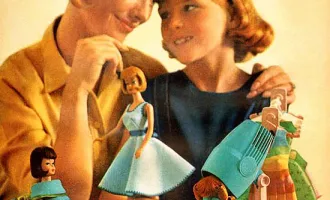Not All Babies Are Born Equal
As I venture through my third year of medical school, I am often reminded that not all babies are born equal. Patient rooms in the county hospital are filled with cheery physicians. They are filled with reassuring news about a common cold, a fever without a source, or inquiries about a first newborn. White coats are not worn, and ID cards and stethoscopes are covered in multicolored stickers.
My patients are often either black or brown, most of them having grown up in either a gentrified city or in segregated housing projects. Having grown up in these communities myself, I know there are issues that a doctor’s visit can’t solve, such as environmental toxins affecting the health of asthmatic children or unsafe neighborhoods that keep children from getting the exercise we healthcare practitioners recommend.
Part of my responsibility as a medical student was to do a home visit with a public health nurse. I chose to visit a patient with a recurrent cough. I approached her home, just a few blocks from the county hospital. Metal bars covered the windows, kids ran around the living room area playing tag, and oldies with Spanish lyrics filled the air. It felt just like home.
And just like home, there was only one room with three beds to house this family. That one room, with mold growing through cracks in the walls, and that house, sheltering other immigrant families, too.
The public health nurse and I sat on their colorful sofa and listened to the mother’s concerns. I knew what she was going to say before she began — that working two jobs was not enough to pay the rent, that she was afraid to file housing complaints due to her undocumented status, and that the bullet-sized hole through her window was due to an accidental drive-by shooting.
As usual, I’m filled with anger, and I express it as usual — I call for one of the four kids.
He comes over, and I give him a high five. I ask, “What do you want to be when you grow up?” And I get the usual, expected, “Hmmm,” as he shrugs his shoulders. I begin with the head-to-toe exam, which I was trained to carry out in my first two years of medical school.
Before I get to the heart, though, I take my stethoscope buds off. I place the bell of my lilac stethoscope on my patient’s chest, and suggest he listen to his own beating heart. And as usual, I get a long drawn-out smile as he thinks of becoming a doctor. It works every time.
Being a first-generation Latina medical student is not an easy journey. Fortunately, I have mentors in the profession who come from similar backgrounds and who faced similar hardships. They became my green light, and I hope to do the same for my pediatric patients.
As I start writing my H&P (history and physical), my little patient takes my lilac stethoscope again. He places it on his mother’s sunburnt chest, covered with wrinkles from her work. He listens.
It’s all I wanted. I may not have the Band-Aid to cover that hole in the metal-bar-covered window, or a suction tube to remove the years of mold, but my job, for that moment, is complete.


